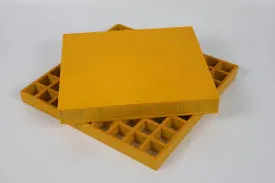
-
 Afrikaans
Afrikaans -
 Albanian
Albanian -
 Amharic
Amharic -
 Arabic
Arabic -
 Armenian
Armenian -
 Azerbaijani
Azerbaijani -
 Basque
Basque -
 Belarusian
Belarusian -
 Bengali
Bengali -
 Bosnian
Bosnian -
 Bulgarian
Bulgarian -
 Catalan
Catalan -
 Cebuano
Cebuano -
 China
China -
 China (Taiwan)
China (Taiwan) -
 Corsican
Corsican -
 Croatian
Croatian -
 Czech
Czech -
 Danish
Danish -
 Dutch
Dutch -
 English
English -
 Esperanto
Esperanto -
 Estonian
Estonian -
 Finnish
Finnish -
 French
French -
 Frisian
Frisian -
 Galician
Galician -
 Georgian
Georgian -
 German
German -
 Greek
Greek -
 Gujarati
Gujarati -
 Haitian Creole
Haitian Creole -
 hausa
hausa -
 hawaiian
hawaiian -
 Hebrew
Hebrew -
 Hindi
Hindi -
 Miao
Miao -
 Hungarian
Hungarian -
 Icelandic
Icelandic -
 igbo
igbo -
 Indonesian
Indonesian -
 irish
irish -
 Italian
Italian -
 Japanese
Japanese -
 Javanese
Javanese -
 Kannada
Kannada -
 kazakh
kazakh -
 Khmer
Khmer -
 Rwandese
Rwandese -
 Korean
Korean -
 Kurdish
Kurdish -
 Kyrgyz
Kyrgyz -
 Lao
Lao -
 Latin
Latin -
 Latvian
Latvian -
 Lithuanian
Lithuanian -
 Luxembourgish
Luxembourgish -
 Macedonian
Macedonian -
 Malgashi
Malgashi -
 Malay
Malay -
 Malayalam
Malayalam -
 Maltese
Maltese -
 Maori
Maori -
 Marathi
Marathi -
 Mongolian
Mongolian -
 Myanmar
Myanmar -
 Nepali
Nepali -
 Norwegian
Norwegian -
 Norwegian
Norwegian -
 Occitan
Occitan -
 Pashto
Pashto -
 Persian
Persian -
 Polish
Polish -
 Portuguese
Portuguese -
 Punjabi
Punjabi -
 Romanian
Romanian -
 Russian
Russian -
 Samoan
Samoan -
 Scottish Gaelic
Scottish Gaelic -
 Serbian
Serbian -
 Sesotho
Sesotho -
 Shona
Shona -
 Sindhi
Sindhi -
 Sinhala
Sinhala -
 Slovak
Slovak -
 Slovenian
Slovenian -
 Somali
Somali -
 Spanish
Spanish -
 Sundanese
Sundanese -
 Swahili
Swahili -
 Swedish
Swedish -
 Tagalog
Tagalog -
 Tajik
Tajik -
 Tamil
Tamil -
 Tatar
Tatar -
 Telugu
Telugu -
 Thai
Thai -
 Turkish
Turkish -
 Turkmen
Turkmen -
 Ukrainian
Ukrainian -
 Urdu
Urdu -
 Uighur
Uighur -
 Uzbek
Uzbek -
 Vietnamese
Vietnamese -
 Welsh
Welsh -
 Bantu
Bantu -
 Yiddish
Yiddish -
 Yoruba
Yoruba -
 Zulu
Zulu
Exceptional Resistance of Fiberglass Ducts
Fiberglass Ducts Exceptional Resistance and Versatility in HVAC Applications
In the modern world of ventilation, heating, and air conditioning (HVAC), the materials used play a critical role in the efficiency and durability of the systems. Among the various materials on the market, fiberglass ducts have emerged as a leading choice due to their exceptional resistance properties and versatility in a wide range of applications. This article explores the advantages of fiberglass ducts, highlighting their resistance to corrosion, temperature extremes, and fire, making them an ideal choice for HVAC systems.
One of the primary benefits of fiberglass ducts is their impressive resistance to corrosion. Unlike metal ducts, which can rust and degrade over time, fiberglass is inherently resistant to a wide range of chemicals and moisture. This characteristic is particularly advantageous in industrial settings where ducts may be exposed to corrosive substances or high humidity levels. The durability of fiberglass ensures that these systems maintain their integrity and efficiency over time, reducing maintenance costs and operational downtime.
In addition to corrosion resistance, fiberglass ducts excel in handling extreme temperatures. They can efficiently operate in both high and low-temperature environments without losing their structural integrity. This property is vital for HVAC systems that need to maintain consistent temperature regulation, particularly in environments where temperature fluctuations are common. Fiberglass insulation further enhances this capability, helping to reduce energy consumption by minimizing heat loss or gain, thereby offering an eco-friendly solution for contemporary HVAC needs.
fiberglass ducts demonstrate exceptional resistance against ...

Fire resistance is another critical attribute of fiberglass ducts. While many materials can be susceptible to combustion, fiberglass offers a high degree of fire resistance. It does not support combustion, making it a safer choice in applications where fire hazards are a concern. In the event of a fire, fiberglass ducts are less likely to release toxic fumes compared to other materials, significantly improving the safety of both occupants and maintenance personnel. This characteristic is particularly important in commercial and industrial spaces where regulations demand stringent safety standards.
Moreover, fiberglass ducts are lightweight compared to traditional metal ducts, making them easier to handle and install. This attribute not only reduces labor costs associated with installation but also allows for greater flexibility in design and layout. The lightweight nature of fiberglass facilitates intricate designs and routing options that may be challenging with heavier materials. As a result, HVAC engineers and contractors have more freedom in creating systems that meet specific needs without compromising on performance.
In terms of acoustics, fiberglass ducts also offer a significant advantage. The material effectively dampens sound transmission, which is essential in residential and commercial spaces where noise control is a priority. By minimizing noise disturbances, fiberglass ducts contribute to a more comfortable living and working environment, which is increasingly valued in today's bustling world.
In conclusion, fiberglass ducts stand out as a superior choice for HVAC applications due to their exceptional resistance to corrosion, temperature extremes, and fire. Their lightweight nature, ease of installation, and acoustic benefits further enhance their appeal. As the industry continues to innovate and prioritize energy efficiency, sustainability, and safety, fiberglass ducts are bound to play an integral role in shaping the future of HVAC systems.
Latest news
-
Exploring the Benefits of Top Hammer Drifter Rods for Enhanced Drilling PerformanceNewsJun.10,2025
-
High-Precision Fiberglass Winding Machine for GRP/FRP Pipe Production – Reliable & Efficient SolutionsNewsJun.10,2025
-
FRP Pipes & Fittings for Shipbuilding - Corrosion-Resistant & LightweightNewsJun.09,2025
-
Premium FRP Flooring Solutions Durable & Slip-ResistantNewsJun.09,2025
-
Premium Fiberglass Rectangular Tanks Durable & Lightweight SolutionNewsJun.09,2025
-
Tapered Drill String Design Guide Durable Performance & UsesNewsJun.09,2025









